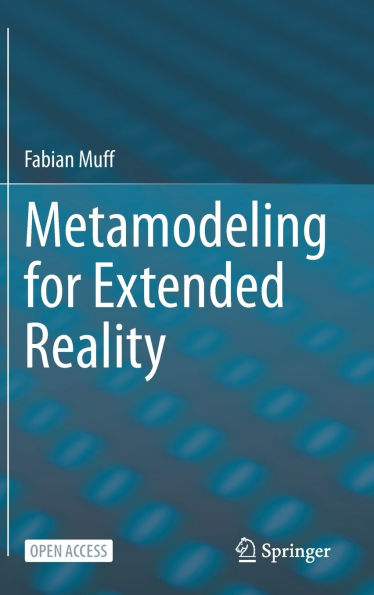The book is structured in nine chapters: Chapter 1 introduces the topic by providing background information and outlining the research objectives, questions, methodology and structure. Chapter 2 delves into the existing literature and developments in the field. It covers various aspects of modeling, such as conceptual, enterprise, and metamodeling, as well as extended reality (XR), virtual reality (VR), augmented reality (AR), and the metaverse. Next, chapter 3 presents the generic requirements for metamodeling for augmented and virtual reality by systematically deriving use cases for joining AR and metamodeling. Chapter 4 then identifies specific requirements for integrating metamodeling with XR, such as coordinate mappings, visualization of model components, detection and tracking, context, or interaction. Subsequently, chapter 5 introduces a new domain-specific visual modeling language for creating augmented reality scenarios, particularly within the context of metamodeling, before chapter 6 outlines the conceptualization and design of a 3D enhanced metamodeling platform considering extended reality, detailing its structure, components, and the interconnection of its elements. Chapter 7 then presents the initial implementation of the various components of this modeling platform, and chapter 8 evaluates the newly introduced platform both theoretically and empirically. Eventually, chapter 9 concludes the book by an alignment with the initial research questions, discussing limitations, and provides a final summary and an outlook for further research.
This book mainly aims at researchers in conceptual modeling, especially in projects related to XR, VR, or AR, as the presented new domain-specific modeling method for creating workflows for XR/VR/AR applications does not assume specific prior programming knowledge.
The book is structured in nine chapters: Chapter 1 introduces the topic by providing background information and outlining the research objectives, questions, methodology and structure. Chapter 2 delves into the existing literature and developments in the field. It covers various aspects of modeling, such as conceptual, enterprise, and metamodeling, as well as extended reality (XR), virtual reality (VR), augmented reality (AR), and the metaverse. Next, chapter 3 presents the generic requirements for metamodeling for augmented and virtual reality by systematically deriving use cases for joining AR and metamodeling. Chapter 4 then identifies specific requirements for integrating metamodeling with XR, such as coordinate mappings, visualization of model components, detection and tracking, context, or interaction. Subsequently, chapter 5 introduces a new domain-specific visual modeling language for creating augmented reality scenarios, particularly within the context of metamodeling, before chapter 6 outlines the conceptualization and design of a 3D enhanced metamodeling platform considering extended reality, detailing its structure, components, and the interconnection of its elements. Chapter 7 then presents the initial implementation of the various components of this modeling platform, and chapter 8 evaluates the newly introduced platform both theoretically and empirically. Eventually, chapter 9 concludes the book by an alignment with the initial research questions, discussing limitations, and provides a final summary and an outlook for further research.
This book mainly aims at researchers in conceptual modeling, especially in projects related to XR, VR, or AR, as the presented new domain-specific modeling method for creating workflows for XR/VR/AR applications does not assume specific prior programming knowledge.

Metamodeling for Extended Reality
258
Metamodeling for Extended Reality
258
Product Details
| ISBN-13: | 9783031767616 |
|---|---|
| Publisher: | Springer Nature Switzerland |
| Publication date: | 02/13/2025 |
| Edition description: | 2025 |
| Pages: | 258 |
| Product dimensions: | 6.10(w) x 9.25(h) x (d) |
